What is Coding?
The Ultimate Guide for Parents
Coding is the method of giving a computer instructions to perform a specific task. You may also hear coding referred to as software programming or computer programming.
These instructions are communicated using a language that computers can understand, like visual blocks, JavaScript and Python.
Code lays the groundwork for our world's technology, from microprocessors in everyday items like refrigerators and water heaters to sophisticated programs that run our cars and buildings.
Learning to code has become an essential element of a child's education and a great way for them to express their creativity and imagination.
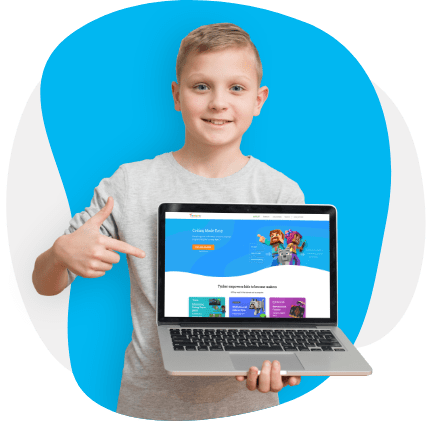
Table of Contents
Here's what we cover in this article. If you see what you're looking for, just click on the link to go directly to that section.
- What is coding for kids?
- Why should kids learn to code?
- Is it hard for kids to learn code?
- How do kids learn to code?
- What are the best programming languages for kids?
- Kids can learn to code apps and games
- Learning to code online
- Where can my child learn to code with an instructor?
- Can my child learn code with an instructor online?
- What offline resources can help my child learn to code?
- My child is more artistic. What can coding do for them?
- How about learning to code based on my child's interests?
- How can learning to code benefit my child?
- Do any coding companies have a curriculum for high school students?
What is coding for kids?
Learning to code is a great opportunity for children of all ages to develop their problem-solving and critical thinking skills, while building the necessary focus and organization to see projects through to completion.
Coding usually begins with drag-and-drop visual programming in which children connect blocks together to make programs. Visual programming teaches the fundamental concepts without typing or syntax by placing the focus on the logic behind the code.
Once they've learned the basics, children can transition to real-world programming languages like Python, JavaScript, and C.
From online coding courses and games to offline learning, from in-person coding instruction to live online tutoring, there are endless coding resources available.
The best coding platforms and programs give children of all ages and experience levels the ability to code while making the process fun and engaging.
Why should kids learn to code?
Technology is prevalent in virtually every aspect of our daily lives and has revolutionized today's world – think self-driving cars, robot-assisted surgery, social media, online banking, environmental conservation, and more. Understanding how to code has become an essential skill to compete in school and in the workforce.
Coding empowers children of all ages to become makers of technology by tapping into their ability to bring their imagination to life.
Kids and teens who code excel at school in math and science, even reading, while developing a skill that will prepare them for future job opportunities.
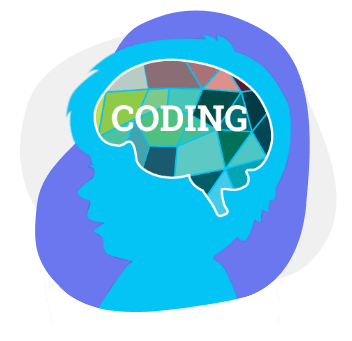
Is it hard for kids to learn code?
With so many great services available, learning to code has never been easier! For example, Scratch and Tynker provide innovative visual coding languages that make coding fun.
Tynker's award-winning platform captivates young coders because its story-driven strategy motivates them to learn more and more coding concepts to find out what happens next and complete the activity.

How do kids learn to code?
Kids of all ages – from kindergarten through high-school – can learn to code in many different ways. The same fundamental concepts such as sequencing, abstraction, repetition, conditional statements, loops, and functions can be introduced to kids of any age or experience level.
The range of coding education solutions spans far and wide! There are apps, websites, camps, live online classes, and personal tutors, so it's important to choose the method that works best for your child.
Websites like Scratch have development environments, allowing kids to make amazing creations by learning from the community.

Kids who'd like more guidance can benefit from the structured and scaffolded coding curriculum offered by Tynker and Code.org. Those who prefer to learn with a tutor can learn to code at an after-school program at school, a summer camp, or live online. Many top programs offer on-demand, self-paced courses and live online classes and tutoring.
Learning to code with Tynker is Fun and Easy!Explore our Award-Winning Coding Courses
What are the best programming languages for kids?
There are many popular programming languages available to kids. Your child can select one based on their age and experience level. Visual programming languages are a great place to start!
We recommend kids begin to learn to code with a block coding language like those offered by Tynker and Scratch. Once they've learned the basics, they can transition to text-based, real-world coding languages like Python and JavaScript. It should be noted that Tynker supports all coding languages.
Tynker's Game-Based Courses Make Learning to Code Exciting!Kids can learn to code apps and games
These days there's an app for everything — including coding for kids — catering to both pre-readers and teenagers. Apps offer coding adventures and games to younger kids, as well as providing the opportunity for older kids to build their own apps and games.
-
Picture-based block coding apps (Ages 5-7)
- Play coding games and challenges or build simple apps in Tynker Junior and ScratchJr.
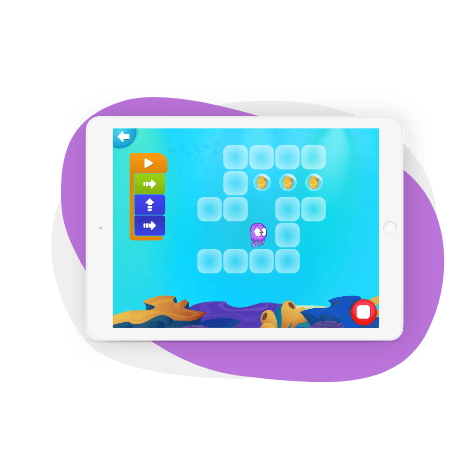
-
Text-based block coding apps (Ages 8-11)
- Download Hopscotch or Tynker from the app store and learn to code by creating apps, games, and projects with text-based coding blocks.
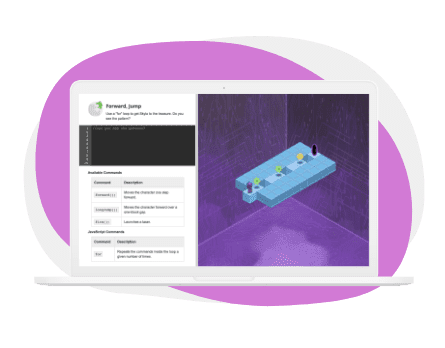
Learning to code online
Enrolling in an online website that teaches kids how to code is an excellent starting point for independent learners. We recommend solutions focused on making learning to code fun and easy.
- Game-based learning - Game-based platforms such as Tynker and the challenges on Code.org motivate kids to use code to complete game levels.
- Independent learning with Scratch - Scratch from MIT is a great way of getting started with code. Although they don't have courses, there's a vibrant community to learn from.
- Online courses - Enroll in a Python or JavaScript course on Codecademy or Tynker or learn to code with Processing on Khan Academy. Tynker offers advanced courses like Processing 1, using p5.js to introduce the foundational concepts of art and computer science.
- Build an app - Learn to build your own iOS app using Swift. Start with these Swift resources and get the Swift Playgrounds app by Apple.
-
Use a book
-
Learn by following along with books like Mission Python, Super Scratch Programming Adventure, or Coding with Minecraft.
Tynker has three super-informative Coding eBooks, including Code These Games and Code This Art.
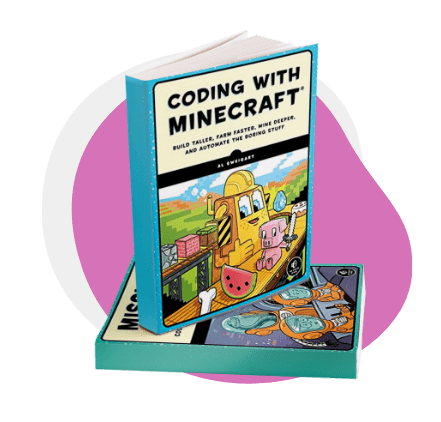
-
Code with toys
-
You can learn to code with toys such as LEGO Mindstorms, or the Harry Potter Kano Coding Kit.
- Tynker joined forces with BBC Learning to bring you the Doctor Who HiFive Inventor Coding Kit, a programmable Internet of Things mini-computer designed to get kids coding with artificial intelligence, robotics, and more!
Where can my child learn to code with an instructor?
If your child prefers live instruction, you can explore camp and tutoring options. Some schools offer opportunities for elementary and middle-schoolers to learn to code through in-class instruction or after-school coding classes.
- Schools - Take advantage of your school's coding programs. It's a great way to get kids involved in computer science and STEM (Science, Technology, Engineering, and Mathematics) at a young age.
-
Live Tutoring
-
Enroll your child in a live, after-school coding class with Tynker's sister company, BYJU'S FutureSchool, and their highly-trained teachers.
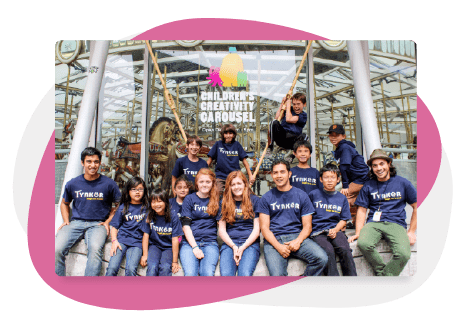
- Camps - Participate in a summer camp such as IDTech or Camp Galileo.
- Tutoring Services - Hire a personal tutor from services such as Wyzant or Juni Learning.
Can my child learn code with an instructor online?
Again, Tynker's sister company, BYJU'S FutureSchool, offers live online coding classes that will accelerate your child's progress from a beginner to an advanced level coder.
What offline resources can help my child learn to code?
Kids can learn computing concepts without a computer or tablet. Hands-on activities using crayons, playing cards, and board games are excellent options to teach coding to kids.
- Unplugged learning - Activities found via CS Unplugged teach kids computing concepts offline.
-
Board games
- Preschoolers can learn to code using fun board games such as Robot Turtles!
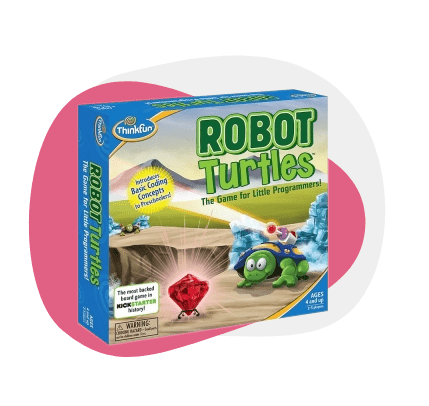
My child is more artistic. What can coding do for them?
With Scratch, your child can create animations, and they can use Code.org for drawing projects.
Whether they're interested in art, animation, character creation, story-telling, or even music, Tynker has powerful creativity tools:
- The Animation Tool: Does your child love writing stories and drawing characters? Well, now they can make their projects even better by creating their own animated artwork.
- The Pen Blocks: Did you know that you can use Tynker to create colorful, original drawings with just a handful of code blocks using Tynker's Pen.
- The Sound Blocks: Play music with code! Add custom sound effects, too. Tynker's brand new music tool supports MIDI and MP3. Choose from over 100 new instruments with slick new interface keys.
How about learning to code based on my child's interests?
Your child can select a set of courses from their Tynker dashboard to match their skill level. Tynker assessments will place them on the right path. In addition, Tynker has interest-based electives, including intermediate and advanced courses in art, music, game design in real-world text languages like Python and JavaScript. They even have Minecraft courses.
- Minecraft - Training Day: Create your own Minecraft skins, items, blocks, mobs, and more
- Game Design - JavaScript 1: Learn to code browser-based games using JavaScript and HTML canvas.
- Creative Coding: Discover programming through art, animation, music and game design.
How can learning to code benefit my child?
Learning to code has endless benefits! From developing your child's soft skills and academic skills to preparing them for future job opportunities, the ability to code will transform your child from consumer to creator.
In a September 2021 Tynker survey, over 90% of teachers and parents believe that coding helps children improve their overall academic performance in math, reading, and writing.
In the same survey, teachers and parents also agreed that coding improves critical thinking, problem-solving, and creativity skills, as well as executive functioning skills like focus and organization.
Coding increases kids' ability to focus on tasks for long periods of time and see projects through to completion.
Coding is the blueprint to the 21st century. Whether making the next big video game, designing a life-saving app, or developing a formula to recycle plastic, coding is a catalyst to having a positive impact on the world through technology.
And thanks to the growing awareness of the importance of learning to code, kids have plenty of options to choose from. Just find the best solution for your child and get them coding!
Do any coding companies have a curriculum for high school students?
Code.org has a year-long course in Computer Science Principles that introduces students to the foundational concepts of computer science and challenges them to explore how computing and technology can impact the world.
Tynker has courses that align with subject standards like CCSS-ELA, CCSS-Math, NGSS and CS standards such as CSTA, ISTE, CA CS, UK National Curriculum, and several state-level standards like TEKS.
Additionally, Tynker's AP courses align with AP Curriculum Framework Standards: AP Computer Science Principles Curriculum Framework 2020-2021 and AP Computer Science A Course and Exam Description, Effective 2020.
Tynker's AP Courses:
-
AP Computer Science Principles (grades 9+) - An advanced year-long high school course designed to introduce students to the central ideas of computer science and prepare them for the AP CS Principles Exam.
- This course aligns with the College Board's new 2020 Computer Science Principles framework covering Creative Development, Data, Computing Systems and Networks, Algorithms and Programming, and Computing's Impact on Society.
-
AP Computer Science A (grades 9+) - This is Tynker's year-long course designed to introduce students to the Java programming language and prepare them for the AP CS A Exam.
- AP Computer Science A is an introductory college-level course taught in Java, a programming language for professional programmers. Tynker recommends that any academically prepared student take this introductory programming course. The only prerequisite is Algebra 1.
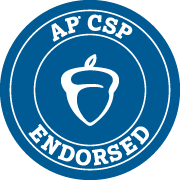
*Tynker survey conducted in September 2021
Frequently asked questions
-
What is computer coding?
Coding is the method of giving a computer instructions to perform a specific task. You may also hear coding referred to as software programming or computer programming. These instructions are communicated using a language that computers can understand, like visual blocks, JavaScript and Python.
Code lays the groundwork for our world's technology, from microprocessors in everyday items like refrigerators and water heaters to sophisticated programs that run our cars and buildings. Learning to code has become an essential element of a child's education and a great way for them to express their creativity and imagination. -
How does coding work?
At the hardware level, computers understand one language, called machine language. This is the set of instructions supported by the computer's processor hardware and is specific to each type of processor. This object code language is numeric in nature and expressed in binary, which is a numeric coding made up of only 1s and 0s. It is very tedious to program in binary, so higher level languages were created to make it easier to create programs.
In a higher level language, you use syntax that is easier to understand to express what you want the computer to do. It is the job of the higher level language to translate those written instructions into binary object code for the computer to execute. In fact, when a program file is created by a higher level language it will contain only the binary instructions for the computer, not your source code. -
What is Coding Used For?
Coding creates a set of instructions for computers to follow. These instructions determine what actions a computer can and cannot take. You've seen the impact of coding in your life with everyday high-tech products, like using your smartphone to shop from the comfort of your couch or your tablet to stream your favorite new television show. Or, perhaps you do all your banking online.
Some people still think of coding as limited to NASA's Space missions, like the Moon landing or even NASA's recent rover expedition to Mars, where coding and robotics were essential. But, there's a lot of hard, exciting, and imaginative work going into new technology from coders all around the world, transforming fields you wouldn't normally expect. -
What are the Careers in Coding?
We're living during a high-tech revolution, witnessing life-changing advancements in medicine, environmental conservation, and much more. At the core of all these fantastic projects and discoveries is code.
Coding jobs are in demand, and the Bureau of Labor Statistics (BLS) projects that computer and information technology employment will grow 13% between 2020 and 2030, which is faster than the average projected growth rate across all occupations (8%).
It's almost impossible to discuss industries or companies that don't have coding careers. Careers include web developer, software developer, game designer, database administrator, network systems administrator, data scientist, product manager, and app developer…and that are just a few of the amazing and high-paying jobs that come with knowing how to code. Coders also earn high salaries and can work remotely very efficiently. -
Is there a difference between coding and programming?
Coding is a part of programming that deals with writing codes that a machine can understand. Programming is a process that creates programs that involve the ratification of codes. Coding requires basic knowledge of programming skills without any software tools.